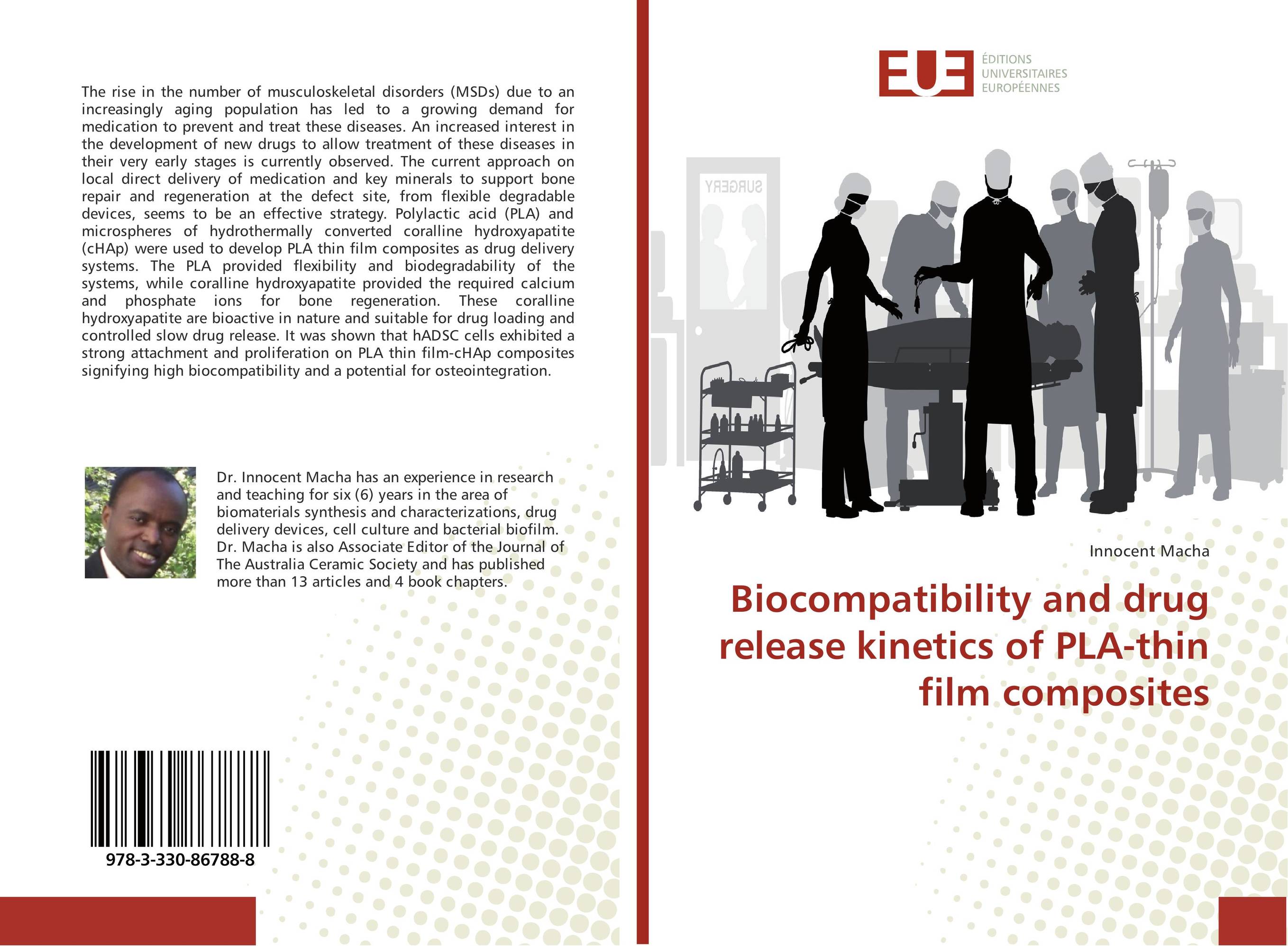| Поиск по каталогу |
|
(строгое соответствие)
|
- Профессиональная
- Научно-популярная
- Художественная
- Публицистика
- Детская
- Искусство
- Хобби, семья, дом
- Спорт
- Путеводители
- Блокноты, тетради, открытки
Biocompatibility and drug release kinetics of PLA-thin film composites.

В наличии
| Местонахождение: Алматы | Состояние экземпляра: новый |

Бумажная
версия
версия
Автор: Innocent Macha
ISBN: 9783330867888
Год издания: 2017
Формат книги: 60×90/16 (145×215 мм)
Количество страниц: 52
Издательство: ?ditions universitaires europ?ennes
Цена: 20988 тг
Положить в корзину
| Способы доставки в город Алматы * комплектация (срок до отгрузки) не более 2 рабочих дней |
| Самовывоз из города Алматы (пункты самовывоза партнёра CDEK) |
| Курьерская доставка CDEK из города Москва |
| Доставка Почтой России из города Москва |
Аннотация: The rise in the number of musculoskeletal disorders (MSDs) due to an increasingly aging population has led to a growing demand for medication to prevent and treat these diseases. An increased interest in the development of new drugs to allow treatment of these diseases in their very early stages is currently observed. The current approach on local direct delivery of medication and key minerals to support bone repair and regeneration at the defect site, from flexible degradable devices, seems to be an effective strategy. Polylactic acid (PLA) and microspheres of hydrothermally converted coralline hydroxyapatite (cHAp) were used to develop PLA thin film composites as drug delivery systems. The PLA provided flexibility and biodegradability of the systems, while coralline hydroxyapatite provided the required calcium and phosphate ions for bone regeneration. These coralline hydroxyapatite are bioactive in nature and suitable for drug loading and controlled slow drug release. It was shown that hADSC cells exhibited a strong attachment and proliferation on PLA thin film-cHAp composites signifying high biocompatibility and a potential for osteointegration.
Ключевые слова: biom?dical, Biomedical, Drug release, biocompatibility, thin film, cell culture, stem cells



